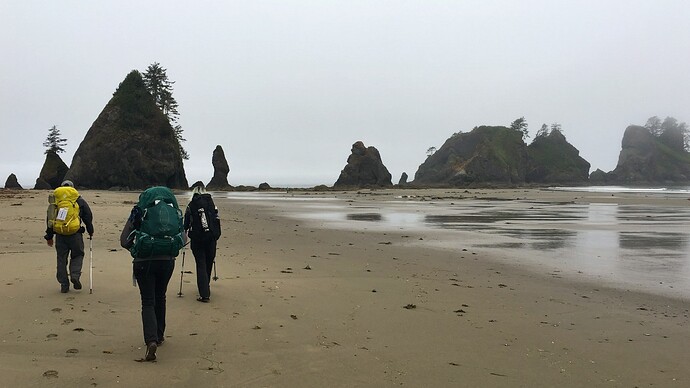Yes - that’s the key point here.
The UK has 3 different legal systems - England and Wales, Scotland and Northern Ireland.
England and Wales has a whole bunch of legal rights or way, but no general access elsewhere**. Scotland has “right to roam” laws, and Northern Ireland has a series of similar but slightly different rules to England and Wales.
In England and Wales, a legal right of way may correspond to one of
- an obvious path of some sort on the ground
- a less obvious path, that is perhaps well signposted
- no obvious path and signposts, but you can still get from A to B (perhaps across open moorland)
- literally no way to get from A to B because it is too dangerous / physically impossible to do so.
Something like (1) obviously deserves a regular highway value. In England and Wales that’d typically be footway or bridleway rather than path because path doesn’t allow the legal status to be recorded properly (but that’s a different discussion to this one).
I’d also happily map (2) as a regular highway value, perhaps in combination with trail_visibility or similar.
I probably wouldn’t map (3) myself, since there’s no highway to add, but if someone’s added it I might not delete it. This is an example of one of those that I linked to earlier. I also wrote a diary entry about a similar one - the photos there tell the story.
An example of something in category (4) is here. The green overlaid northwest-southeast line is a legal right of way. You’d have to hitch a lift with Dracula from just up the road to get across the ravine that the stream has cut, and through the bracken.
The problem that I have with highway=pathless is that I suspect that some people will use it for (2), which I think (as I think @ZeLonewolf said) that that’s perfectly OK to tag as a path. I can sort of see the point of using it with (3), but think that if we had to have the legal right of way from my diary entry in, just designation=public_footpath rather than a highway=not actually a highway would be better. Someone tagging (4) as any sort of highway would imply to me that “this is a route that you can take” when in any normal sense it absolutely isn’t.
** As an aside, I believe that all of these paths are across access land. Technically, in all of these cases the foot access is yes, even if that is moot because it’s not physically possible to do it. designation=access_land has been used for this, but it’s far from universal in England and Wales where it applies.
Editing to also reply to:
As described above, in England and Wales we absolutely have things that other countries would tend to map as highway=path but don’t because of the legal nuances here (among other reasons).
“mostly unrestricted access on foot”, certainly.
In a lot of places, the legal access is available as open data, so if someone wants to create a map that overlays “legal access rights” over “what paths actually exist” they absolutely can do that.

